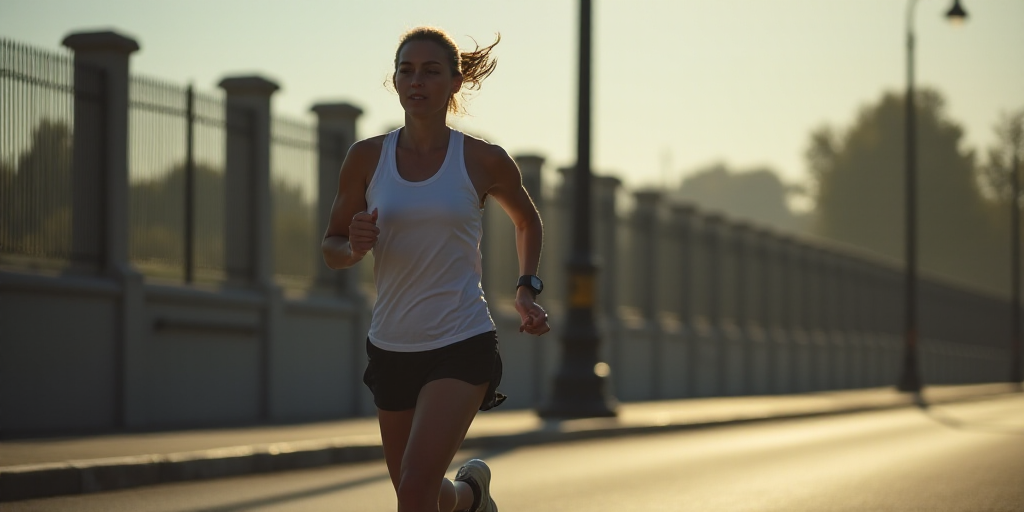Preparing for the 21K: Key Nutritional Strategies
On July 13, approximately 30,000 runners will take on the Paseo de la Reforma for the 19th edition of the CDMX Half Marathon. This year, the route, medal, and t-shirt honor the 700 years since the founding of Tenochtitlan, making every kilometer a celebration of history and resilience.
Beyond physical training, the success in the 21K also depends on a solid and realistic nutritional plan. To help you cross the finish line with strength, we gathered tips from Natalia Berrón, a running nutrition specialist, and Araíz Arriola, an experienced runner who knows every curve and hill of the route.
Breakfast to Carry You Through the Finish
Natalia Berrón emphasizes that breakfast is non-negotiable for race day. Although many runners fear feeling heavy or experiencing stomach discomfort, the key is practice: “Your breakfast should be high in carbohydrates, easy to digest, and tested during previous training sessions,” explains the specialist.
- Avoid excessive fats and fiber. Opt for familiar foods to your stomach: white bread with jam, banana, smooth oatmeal, or white rice with a touch of sweetness.
- Ideally, have your breakfast 1 to 3 hours before the start to allow proper digestion and glucose loading without surprises.
Natalia recommends that this routine not be improvised: “Practice your breakfast before long training sessions so it becomes your confidence formula for every race.”
Gel Strategy: Personalized Planning
For a half marathon, maintaining consistent energy levels is crucial. Natalia Berrón advises calculating carbohydrate consumption during the race: “between 60 and 90 grams per hour.”
- A gel typically provides between 25 and 30 grams. Depending on your pace and race duration, you might need 2 to 3 gels.
- Practice with them before the event. Your digestive system also needs training. Trying out times and gel marks will help you identify which ones suit you best and how to schedule their consumption to avoid energy spikes or discomfort.
Planned Hydration, Not Reactive
Another essential tip from Natalia Berrón is to avoid letting thirst dictate your strategy. “When you’re thirsty, there’s already a significant degree of dehydration,” she warns. Therefore, the recommendation is to hydrate from the start, with small, consistent sips, to maintain efficient stomach emptying and avoid saturation in the more demanding parts of the route.
Take advantage of the initial flat and easy kilometers to drink calmly and plan your hydration points, considering the official stations of the event.
Practical Route Tips for Eating and Hydrating
Araíz Arriola, an experienced runner and content creator for runners, knows the CDMX Half Marathon route inside out. She recommends arriving early to avoid stress and positioning yourself in your designated corral, especially considering the mass start on Reforma.
- The first 4 kilometers are flat and fast, so she suggests not getting carried away by the excitement: “Avoid starting too fast or making bursts that will burn you from the start,” advises Araíz. These kilometers are ideal for taking your first sip of water or even a small gel, as the body digests better in less demanding moments.
- The real challenge begins with the prolonged ascent between the Auditorio Nacional and the Petróleos Fountain. This nearly 3-kilometer section demands sustained effort: “Keep your back straight, short steps, and a constant rhythm.” Here, stomach emptying becomes slower due to intensity, so it’s not ideal for eating or drinking too much: the best approach is to arrive well-hydrated beforehand.
- From kilometer 8, the technical descent requires posture control and tension release. This stretch allows consuming liquids or gels more securely, but you need to plan the moment well to avoid abrupt brakes or distractions in areas with potholes.
- In the final 6 kilometers of descent and undulating terrain, Araíz invites you to “take advantage of the momentum, relax your shoulders, and slightly tilt your torso forward.” This is the perfect moment for the last gel or isotonic drink to push you across the finish line.
A Personalized Plan is Your Best Ally
The main lesson from Natalia Berrón and Araíz Arriola is clear: there’s no one-size-fits-all plan for everyone. Your nutrition should be trained just like your legs. Experiment with breakfast, hydration, and gels during previous training sessions. Learn to read your body and adjust your strategy based on the expected weather, altitude, and pace in Mexico City.






